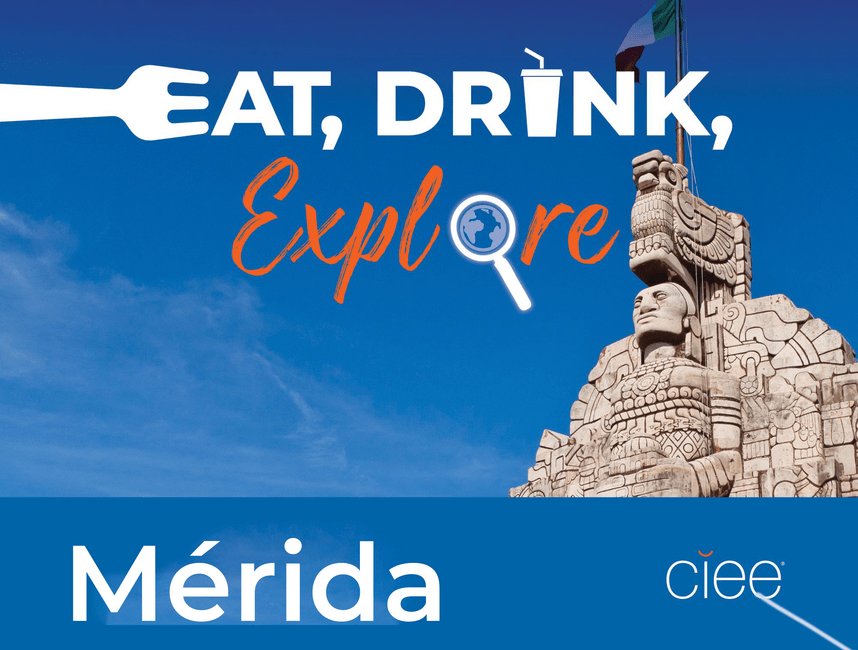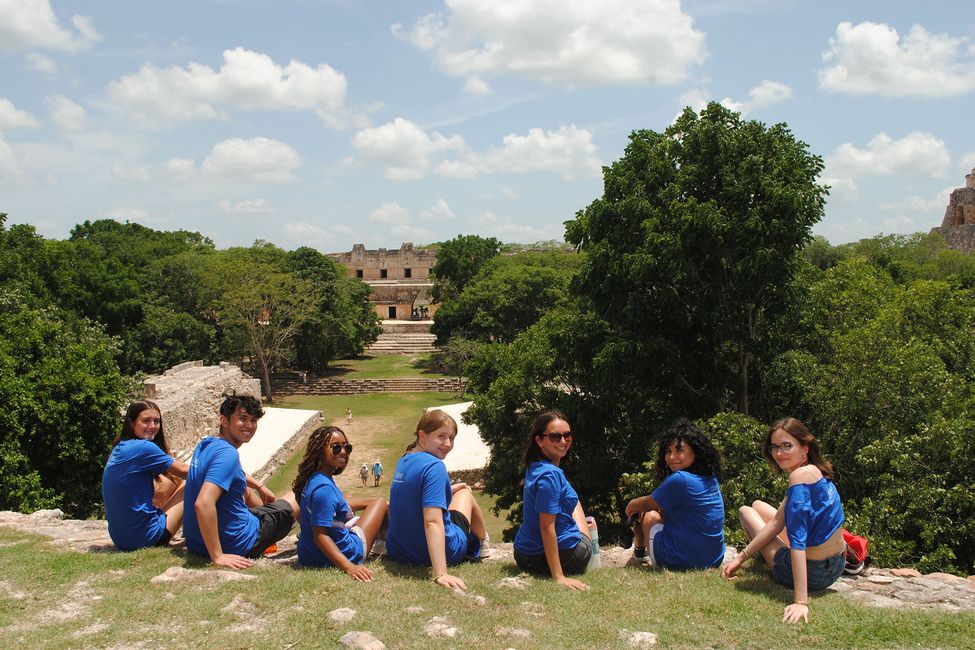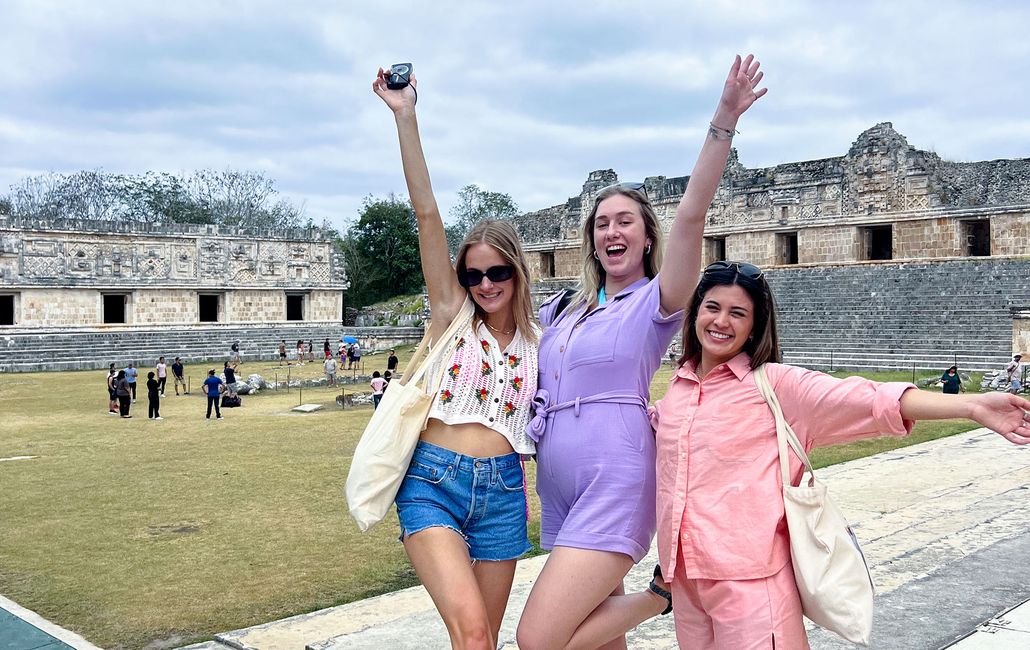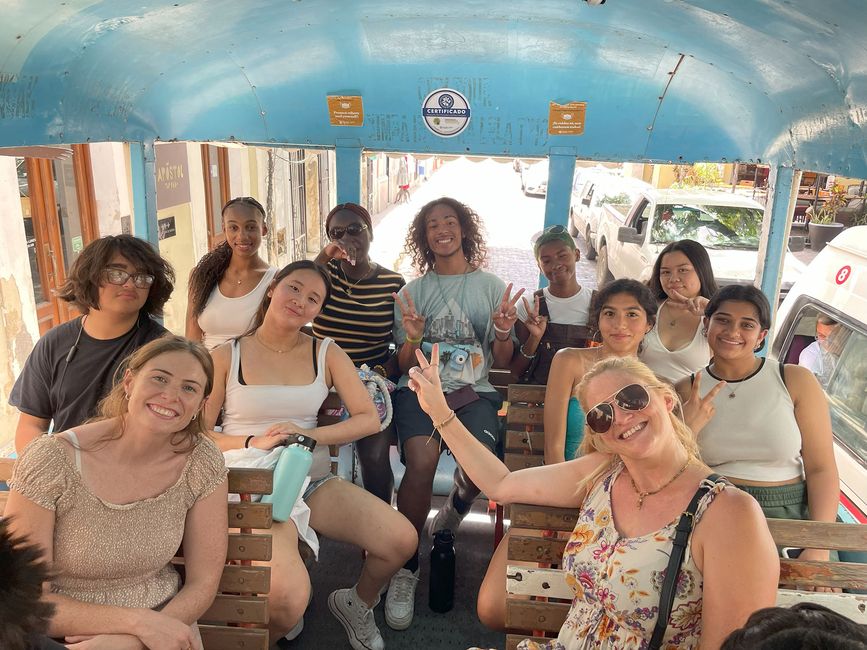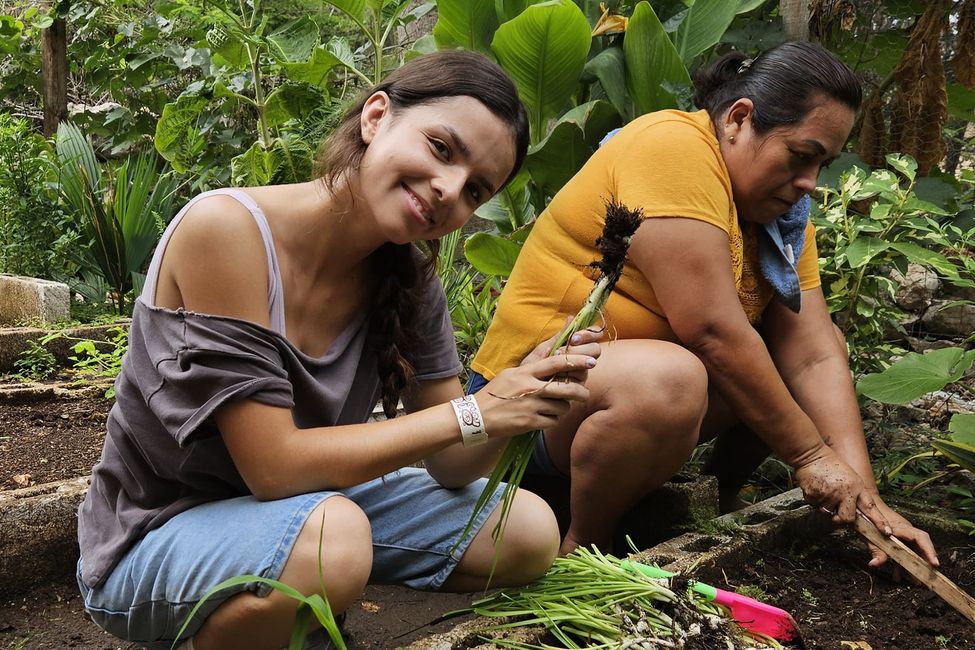EAT, DRINK, EXPLORE: MERIDA
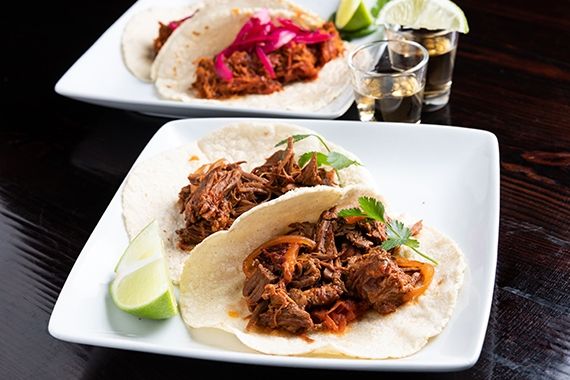
BEST FOOD TO EAT IN MERIDA
Yucatecan cuisine is heavily influenced by the ancient Maya who successfully turned local crops like tomatoes, turkey, chiles, corn, and pumpkins into complexly flavored, delicious dishes. One such dish is cochinita pibil. Suckling pig is marinated overnight in citrus juice which tenderizes the meat. It’s then seasoned with deep red achiote paste – another Maya specialty made annatto seeds, cumin, coriander, oregano, cloves, and garlic. The meat is wrapped in banana leaves, cooked in a fire pit, or pib, and eaten with tortillas, pickled onions, and salsa.
Top Cultural Foods To Try in Mérida
Here are some of the top traditional foods to try while you're studying in Mérida:
- Sopa de Lima: This is a light and incredibly flavorful soup made with a savory chicken broth, shredded chicken, crispy tortilla strips, and a generous amount of fresh lime juice. It's a signature dish of the region, and a favorite among students.
- Poc Chuc: Poc Chuc is grilled pork that has been marinated in sour orange juice, which gives it a unique and tangy flavor. It's often served with pickled onions and a side of rice or beans, and a great option to explore the local culinary scene.
- Papadzules: Papadzules are corn tortillas that have been filled with hard-boiled eggs and then smothered in a savory pumpkin seed sauce and a tomato sauce. This is an ancient Mayan dish that you won't find anywhere else, so make sure you try it while you’re studying there!
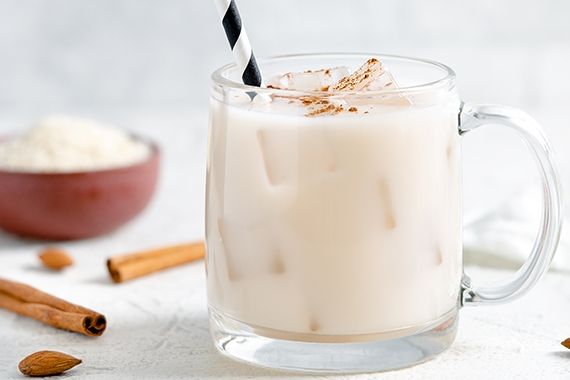
BEST DRINK IN MERIDA
Rice, almonds, cinnamon, and sugar sound more like the ingredients for a fine rice pudding than a popular, thirst-quenching beverage - unless you’re in Mérida where they’re used to concocting horchata. Long grain white rice is soaked in water then whipped in a blender with cinnamon sticks, sugar, and vanilla. Flavors mix and mingle overnight then the liquid is strained and poured over ice. A variation of the drink is served all over Latin America, but the use of rice in horchata is unique to Mérida.
Top Cultural Drinks To Try in Mérida
Here are some of the top traditional drinks to try while you're studying in Mérida:
- Aguas Frescas: On a hot day in Mérida, nothing is more refreshing than an agua fresca. These are light, non-alcoholic drinks made from fresh fruits, flowers, or seeds. You can find all kinds of delicious flavors like hibiscus (Jamaica), tamarind, and cantaloupe.
- Horchata: Horchata is a sweet, milky-white beverage made from rice and cinnamon. It is a creamy and refreshing drink that is perfect for a hot day, and you can find it nearly everywhere, from street vendors to restaurants.
- El Oasis: El Oasis is a local spot famous for its amazing sorbets and juices! This spot is a must-visit in Mérida. You can try a variety of exotic flavors like mamey, guanábana, and coconut. It's definitely the perfect place to cool off and try unique, local fruit flavors!
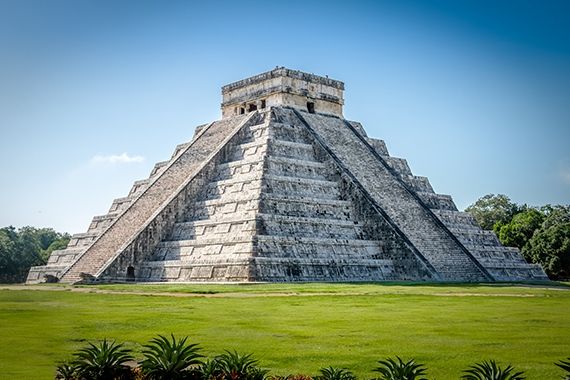
BEST PLACE TO EXPLORE IN MERIDA
Mayans have been inhabiting the Yucatán Peninsula for more than 3,000 years and one of their most incredible legacies are the ruins at Chichen Itza. Declared a UNESCO World Heritage site because of its sheer creative genius, the site was the center of Maya civilization for 1,000 years. The pyramid El Castillo sits in the center and expertly depicts the 365-day calendar year using a series of square terraces on four sides. It’s not only a breathtaking site, it’s an artistic masterpiece. The site also contains a ball court, Temple of Warriors, and Sacred Cenote where human sacrifices were made to appease the Gods. Do. Not. Miss. This.
Top Cultural Attractions to Visit in Mérida
Here are some of the top cultural attractions to visit while you're studying in Mérida:
- Plaza Grande: In the heart of the city, you’ll find this main square that is surrounded by stunning colonial buildings, including the cathedral and the governor's palace. On weekends, it is filled with food vendors, live music, and dancing. It’s both a beautiful place and a great experience while studying abroad!
- Gran Museo del Mundo Maya: If you want to learn more about the history and culture of the Mayans, you'll want this museum on your bucket list. The building itself is an architectural masterpiece, but inside, you can explore thousands of artifacts that tell the story of the Mayan people all the way from ancient times to today.
- Paseo de Montejo: This beautiful tree-lined avenue is the perfect place for a walk or bike ride. The street is lined with stunning, European-style mansions from Mérida’s wealthy past. You’ll love strolling along the street while enjoying the vibe of the city and visually exploring the city’s unique history!
Related Posts
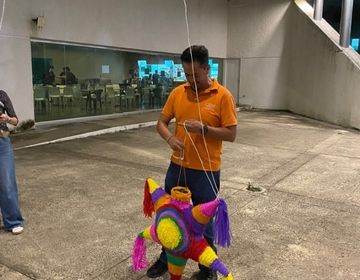
Why Should You Choose to Study Abroad in Mexico?
By: Michael Kline Are you ready to embark on a journey that combines academic enrichment, cultural discovery, and personal growth? Studying abroad in Mexico with CIEE offers all this and... keep reading
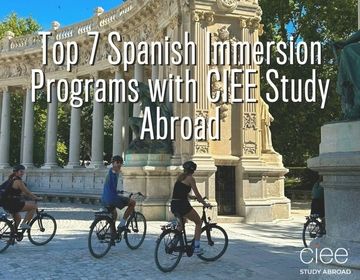
Top 7 Spanish Immersion Programs with CIEE Study Abroad
Let’s be real: There’s no better way to learn Spanish than actually living it. Forget the textbook exercises and Duolingo streaks – envision yourself chatting with locals about fútbol (not... keep reading
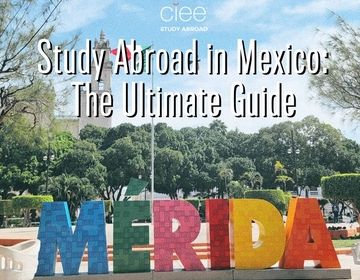
Study Abroad in Mexico: The Ultimate Guide
Ready to trade your dorm room for palm trees and panuchos? Studying abroad in Mexico is your chance to do just that! Picture this: You’re taking classes at the stunning... keep reading
